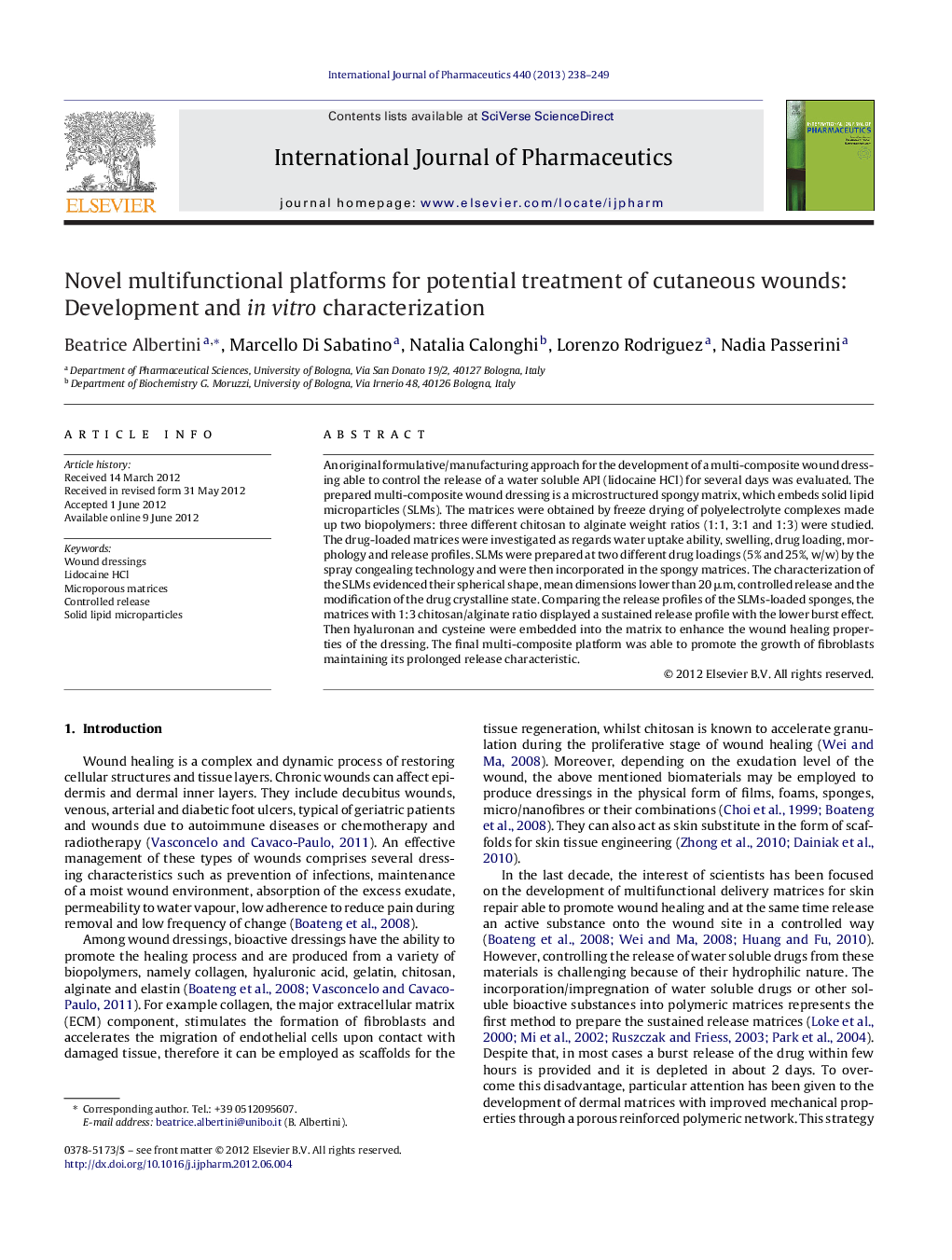| Article ID | Journal | Published Year | Pages | File Type |
|---|---|---|---|---|
| 2502697 | International Journal of Pharmaceutics | 2013 | 12 Pages |
An original formulative/manufacturing approach for the development of a multi-composite wound dressing able to control the release of a water soluble API (lidocaine HCl) for several days was evaluated. The prepared multi-composite wound dressing is a microstructured spongy matrix, which embeds solid lipid microparticles (SLMs). The matrices were obtained by freeze drying of polyelectrolyte complexes made up two biopolymers: three different chitosan to alginate weight ratios (1:1, 3:1 and 1:3) were studied. The drug-loaded matrices were investigated as regards water uptake ability, swelling, drug loading, morphology and release profiles. SLMs were prepared at two different drug loadings (5% and 25%, w/w) by the spray congealing technology and were then incorporated in the spongy matrices. The characterization of the SLMs evidenced their spherical shape, mean dimensions lower than 20 μm, controlled release and the modification of the drug crystalline state. Comparing the release profiles of the SLMs-loaded sponges, the matrices with 1:3 chitosan/alginate ratio displayed a sustained release profile with the lower burst effect. Then hyaluronan and cysteine were embedded into the matrix to enhance the wound healing properties of the dressing. The final multi-composite platform was able to promote the growth of fibroblasts maintaining its prolonged release characteristic.
Graphical abstractFigure optionsDownload full-size imageDownload high-quality image (195 K)Download as PowerPoint slide
